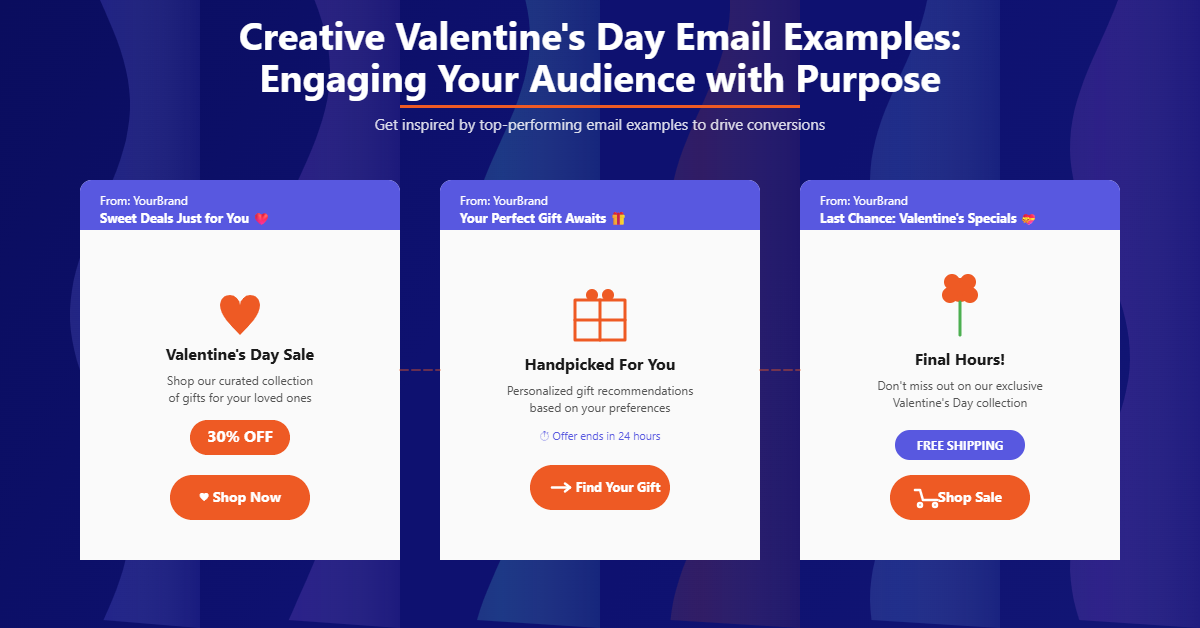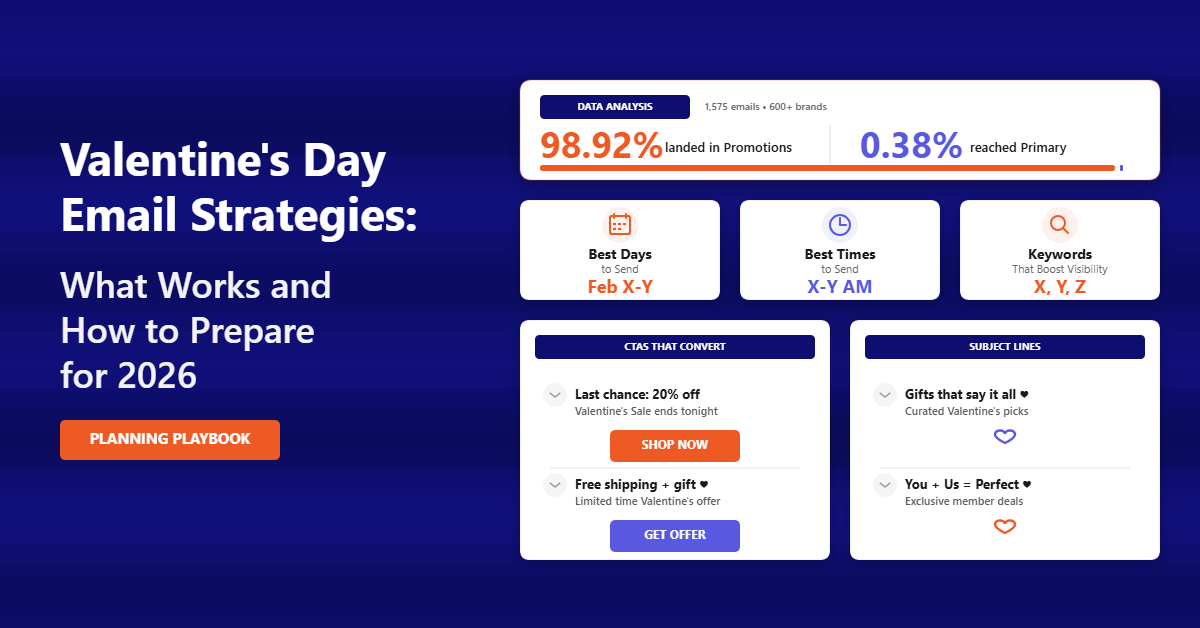Successful e-commerce shops don’t just happen. They’re the direct result of strategic content and email marketing for e-commerce growth. Here’s what you need to know to get it right.
There’s a direct connection between the ultimate success of your e-commerce store and how well you connect with your target audience. After all, today’s consumers want more than just great products and services from the brands they buy from. They want genuine, ongoing relationships, as well.
A solid approach to content and email marketing for e-commerce growth is the best way to accomplish that.
Meaty, helpful content provides shoppers with the information they need to make informed buying decisions and get excited about future purchases. Meanwhile, smooth email marketing lets you keep in touch with your clientele on a level that’s both profitable for you and comfortable for them.
Exploring the Stages of the E-Commerce Customer Journey
Although people do sometimes make impulse purchases, it usually takes time for people to go from finding out about a product to being ready to buy it. That’s where the concept of the e-commerce customer journey comes in.
Yes, your products and the way you have your e-commerce store set up in the first place are part of what ultimately inspires consumers to buy. But marketing content, as well as strategies like trigger emails, complete the circle in some important ways.
Awareness stage
This is the stage when a potential customer first discovers your e-commerce shop or otherwise becomes aware of your products. This can happen via word of mouth, a PPC ad, or even just a social media post that caught the person’s eye.
This is an ideal stage for discovering what makes your customers tick, learning about what they like, and using it to improve your email marketing for e-commerce growth.
Consideration stage
During this stage, prospective customers are learning more about your products, your brand, and what you’re all about. They’re also still deciding whether what you offer is truly the right solution for their needs.
This means they’re also still looking into other options, comparing prices, and weighing the possibilities.
Conversion stage
This is the stage at which the consumer has more or less made their decision. They want to buy, quite possibly from you specifically. All they need is the right incentive to nudge them in the right direction.
It’s also crucial to pay attention to customer service at this stage, as a positive experience could easily win you a customer for life.
Successful e-commerce merchants understand the customer journey well enough to anticipate the buyer’s needs at each of the above stages. By zeroing in on these needs and giving your customers what they’re looking for, you’re ensuring a positive shopping experience from start to finish.
You’re also establishing trust early and nurturing the beginnings of what could potentially be a wonderful brand-customer relationship. The right approaches to email marketing for eCommerce and content creation can help you successfully maintain those relationships over time, as well.
Crafting Compelling Product Descriptions and Reviews
Spend much time shopping online, and you’ll quickly realize that most product descriptions are pretty awful. It’s because merchants simply assume that no one reads them. However, research shows that around 20 percent of unsuccessful online purchases are due to poor or incomplete product descriptions.
Instead, electrify your shop with product descriptions that appeal to your customer’s imagination and help them imagine what life could be like if they completed a purchase. And leverage the power of social proof by encouraging your customers to leave product reviews for purchases they enjoyed.

Utilizing Informative Blog Posts and How-To Guides
Even the best products don’t sell themselves. It’s up to you to convince buyers that your offerings are the solutions they’ve been looking for. That’s where well-optimized marketing content comes in.
Craft dynamic blog posts that go beyond simply marketing your wares by tapping into related issues your customers care about. Empower buyers with informative how-to guides that help them evaluate their options and get more out of their purchases.
Hiring professional content writers via a trusted content marketplace like WriterAccess can help take the guesswork out of the process.
Showcasing User-Generated Content and Testimonials
Nothing helps paint your products in a positive light quite like happy customers who are already out there enjoying them. Invite yours to become part of your marketing story by making compelling user-generated content, creating testimonials about their experiences, and so forth.
Raise participation levels by offering incentives for participation, and make your customers feel special by sharing what they create across your social media channels and blog.
Building Effective Email Campaigns for Each Stage
Email has been around nearly as long as the internet itself. However, it’s still one of the most effective marketing methods out there. Most people check their email a minimum of once a day, and about 19 percent of people check messages the minute they’re delivered.
Plus, email is a socially accepted, welcome way for consumers to hear from brands. Make sure your customers are eagerly awaiting your next messages with email campaigns that include the following.
Welcome emails
A welcome email is often the first message a customer gets from a brand, so it’s important to strike the right chord with yours. Use language that builds trust and sets expectations. For best results, send welcome emails within 24 hours.
Nurturing emails
This type of email can stand alone or be part of an automated sequence designed to help an existing or potential customer make a buying decision and complete a purchase. They play a pivotal role in driving revenue and maintaining customer relationships.
Abandoned cart emails
Abandoned cart emails go out to customers who added items to a cart at your shop but left before they could finalize a purchase. Create a sense of urgency with a strong call to action, and sweeten the pot a bit with a discount or special offer that’s impossible to resist.
Post-purchase emails
When a customer completes a purchase or other transaction with your brand, they want to know for sure that everything went through OK on their end. Post-purchase emails provide them with the confirmation and further information they’re looking for.
Re-engagement emails
This very crucial type of email is the key to reconnecting with customers who haven’t purchased in a while or who might not be engaging with your mail content the way they used to. Make yours irresistible via coupons, special announcements, exclusive offers, etc.
Personalization and Segmentation
If you’re like most people, you’re a lot more likely to open and engage with an email that’s personally addressed to you and tailored to your needs than you are a generic message that’s the same for everyone.
Your customers are the same, so be sure to use personalization and segmentation to ensure message relevancy. You can personalize based on context, demographics, customer behavior, or all of the above.
Leveraging Drip Campaigns
Drip campaigns can be an incredible way to market to customers who complete specific actions at your e-commerce store. They’re an automated series of emails sent in numbers and at rates you choose to engage your client base better.
Abandoned cart emails are actually a form of drip email. But you can send similar emails to people who do things like sign up for your mailing list, leave a review, participate in a survey, etc. Be sure to thoroughly personalize each email for the best results.

Syncing Content and Email Marketing Efforts
Another solid way to enhance your eCommerce business with email marketing is to coordinate your email efforts with your content marketing output. This helps support consistency in brand messaging, design, and more. It’s also a great way to boost conversion rates.
For example, you can support a marketing campaign for a new product with blog content that helps with decision-making, plus email blasts filled with personalized suggestions for coordinating products.
Driving Traffic with Relevant Content and Email Promotions
Successfully leveraging content for e-commerce growth means taking advantage of opportunities to cover current events, industry news, hot niche topics, and more. The same goes for current search trends and keywords. Relevancy drives traffic, engages audiences, and attracts newcomers to the fold.
And again, always maximize your results by ensuring your content production efforts and email strategies are in sync.
Continuously Analyzing and Refining Strategies
A great approach to content and email marketing for e-commerce growth isn’t something you establish once and then forget about. Ongoing campaigns require perpetual analysis, reassessment, and adjustment.
Keep careful track of your data. Take note of what’s working and what isn’t. Adjust and update your approaches accordingly.
Case Study: Hammock – How Content and Email Marketing Boosted Conversions
It may seem as if more is always more when it comes to marketing emails and conversion-focused content. However, while more posts and higher numbers of email blasts can work this way, it can be a better approach to focus more on targeting and relevancy instead.
Marketing company Hammock improved their open rates by 48 percent and boosted their lead quality by cutting back on email frequency but dialing up the content quality with a bimonthly send called “The Idea Email” – one newsletter-style email packed with genuinely useful insights.

Case Study: Allakando – The Power of Personalization and Targeted Emails
In November 2021, Swedish tutoring company Allakando was managing 26,000 students and 5,900 tutors. However, it was important to them to maintain a personal touch, as well as efficiency.
By analyzing data, segmenting their contact list into multiple email groups, and applying custom fields where it made sense, they were able to do exactly that. Their customer outreach content is known for its warmth, relevancy, and appeal.
Conclusion
When it comes to content and email marketing for e-commerce growth, success is about more than simply knowing what to do and staying consistent. You also need well-chosen words, marketing expertise, and keen storytelling skills to achieve the desired results.
Get to know your audience intimately. Dial up the quality of your content by hiring professionals from a trustworthy platform like WriterAccess to help. Then, implement best practices to maximize your results.




